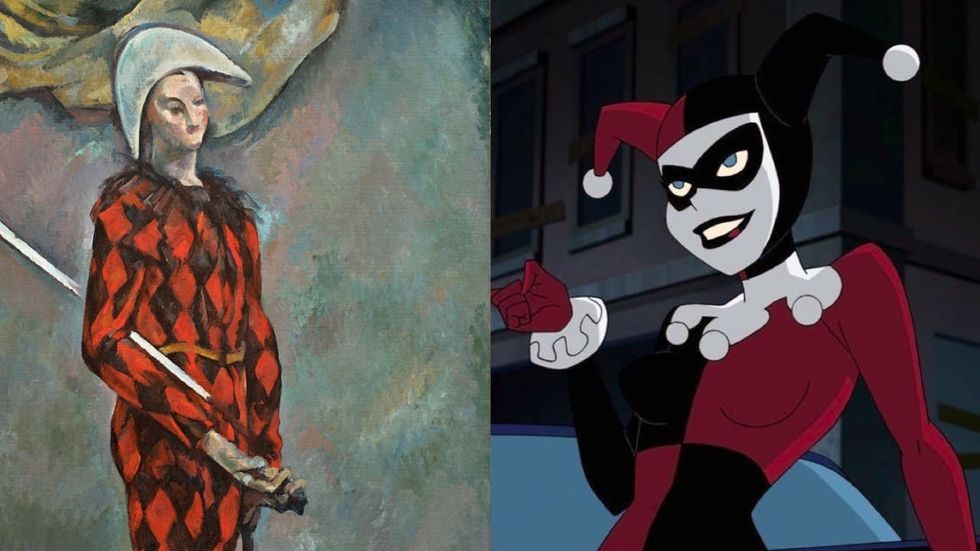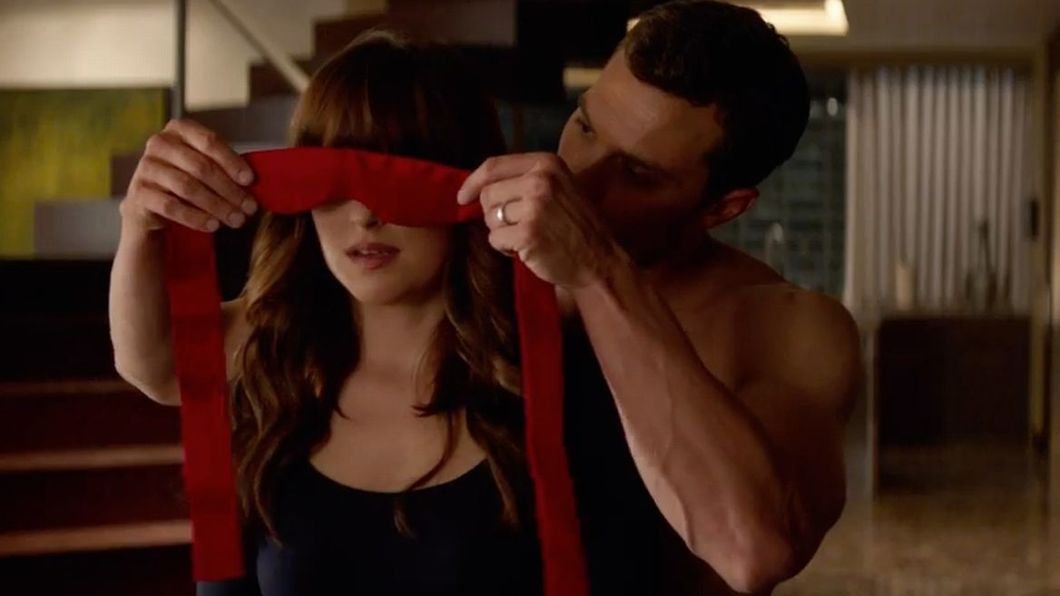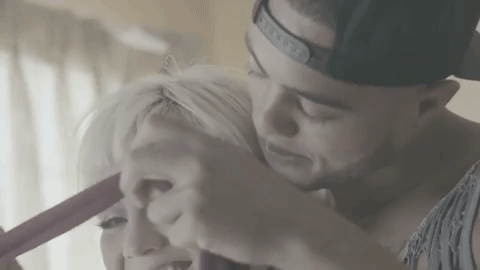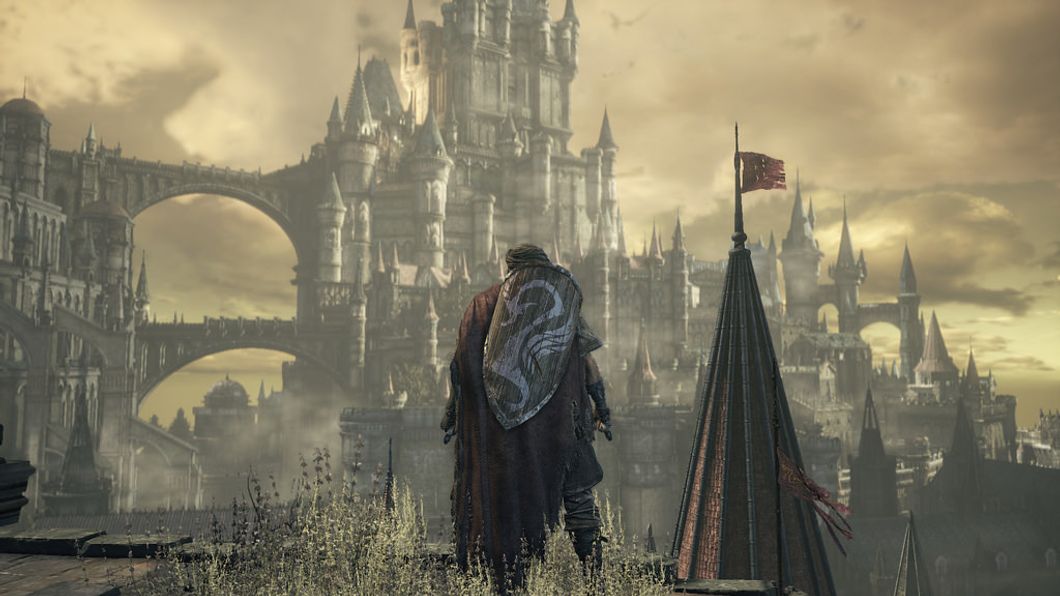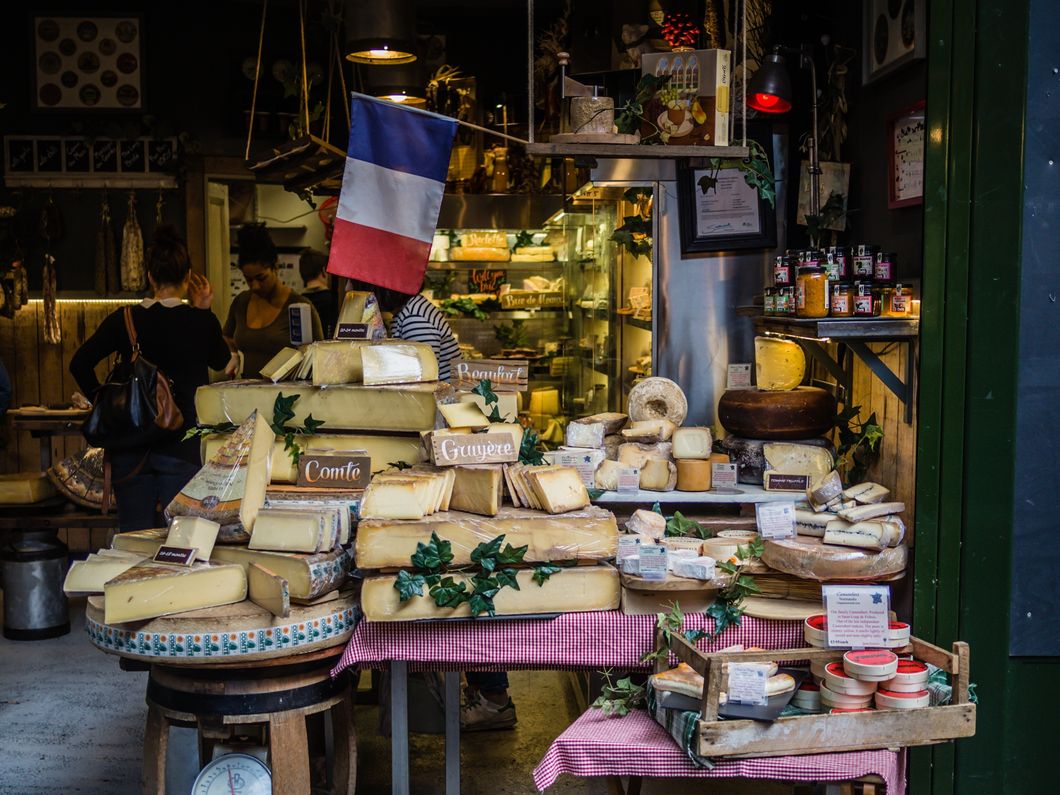The Evolution Of The Harlequin Archetype To DC's 'Harley Quinn'
What does the progression of the Harlequin from male to scantily clad female say about how we perceive strong, complicated female characters?
The Harlequin predates Harley Quinn by about 500 years. Until her debut in DC Comics, the harlequin was generally considered to be male.
The Harlequin (entered into the OED in 1898) is described by the Oxford English Dictionary as: "A character in Italian comedy, subsequently in French light comedy; in English pantomime a mute character supposed to be invisible to the clown and pantaloon; he has many attributes of the clown (his rival in the affections of Columbine) with the addition of mischievous intrigue; he usually wears particolored bespangled tights and a visor, and carries a light 'bat' of lath as a magic wand." An example of using this in a sentence in 1585 could be: "Who will be playing the harlequin this afternoon?"
The term has also been known to mean: "transitive. To color, decorate with contrasting colors." Or "a. transitive. To conjure away, like a harlequin in a pantomime. rare." You would hear something akin to: "I've done the harlequin to the whole set design."
Today the word "Harlequin" is ripped apart into the name "Harley Quinn." The "Harley" of the word brings forth images of rough and tough motorcyclists, while the full phrase conjures up the 1992 DC comic book villain-turned-hero Harley Quinn. It is important to note that her character was created to compliment the Joker, rather than being created as stand-alone villains. While Harley is introduced as the manic lover of the Joker, she is also shown to be verbally and physically abused. What is most fascinating, is the more the joker hurts and rejects her, the more fervently she tries to appease him. Even in 1992, this abuse was masked in light comedy, similar to that of the actual Harlequin.
The name has piqued in popularity ever since the 2016 debut of Margot Robbie's portrayal of the character in "Suicide Squad," where she steals the show with her zest and zeal. Originally Harleen Quinzel, the 20 somthin' psychology graduate student becomes infatuated with the subject of her study: The Joker.
James & Jenna's Waltz - Dancing with the Stars. Notice any Sadomasochistic themes in this dance?YouTube
Things move quickly after Harley agrees to help The Joker escape Arkham Asylum. Harley sacrifices her career, sanity, and identity for the Joker. The Joker even bleaches her skin and threatens to kill her if she leaves, and even if she stays long enough to bother him (it is debated whether or not she made these choices herself in a rational state of mind, or if they were coerced/made for her).
This pseudo-romance is actually a common phenomenon known as Hybristophilia or Bonnie and Clyde Syndrome. Once under the influence of the supervillain, Harleen undergoes a physical and psychological transformation in which she becomes her alter ego "Harley Quinn." Her persona envelops the origins of her namesake perfectly. Dressed in jester regalia, Harley exhibits the reckless, manic, and endearing qualities she was coined for.
The "Harlequin" is a theatrical/dramatic stock character thought up in the later 1500s (1585 to be exact) by the traveling Masque troupes of the Italian countryside. These masques are more commonly known as the Commedia dell'arte. Commedia is a type of physical comedy theater in which archetypal characters are manipulated. The comedy of the masks requires a certain level of fever. Names such as "Harlequin" or Pantalone come from the over the top nature of the caricatures. This type of theater is thriving 450 years later in this very community. Western Washington University offers intensives for Commedia each Summer at the Maritime Heritage Park. To understand and embody each stock character including the Harlequin is considered the foundational acting theory.
What I find so interesting about the "Harlequin" is its transition from male to female. The original "Harlequin" was often played by a young male actor. Although the Masque troupes of renaissance Italian Theater allowed for female players, they were considered salacious and were usually offered roles of the lover, rather than the comic.
The Harlequin is a zany, mischievous, almost fae-like character. It is important to note that although he possessed swagger and charm, the harlequin is also of the servant class of caricatures. Each caricature in Commedia is designed to satire either the aristocracy, the lovers, or the servant class. This is made evident by the standard costume of the "Harlequin": brightly colored, checkered jesters tatters (see below).
Since the 1580s, the Harlequin of the mainstream has undergone a drastic change. Now, when we hear "Harlequin" we immediately separate those words into the image of Harley Quinn. Harley Quinn is notable for a few reasons other than her playful nature and jester's uniform. She is also an overtly sexualized character. Her first appearance in 1992 was that of a body-hugging jumpsuit, on her hands and knees begging the joker to love her. The Joker proceeds to throw her violently from a window, and she crawls back to him begging for more.
SEE ALSO:The Over-Sexualization Of Harley Quinn
Thus, the word "Harlequin" has become synonymous with female sexual deviance, and submission. After all, her character does sacrifice her livelihood for the sake of a man, who in turn emotionally and physically abuses her. I'd go as far to say it has evolved to be evocative of BDSM. Collars and chains reading "Daddy's Little Monster" or "puddin'" are currently selling in Hot Topic, and Harley's signature black and red-hot pants have been flying off the shelves since the 2016 premiere of Suicide Squad. Even her tight bodysuit has morphed into a fishnetted belly shirt ensemble.
Still, the symbols of her past décor her costume: Spades, contrasting color schemes, and playful, whimsical design. Halloween 2016 saw the most popular female costume to be the new Harley Quinn design (admittedly, I too dressed up as her that year…despite her patriarchal overtones, efforts have been made to solidify her as own character is not only sexy but flawed, badass, honest, and eccentric.).
Problematic from its conception, the Harley Quinn/Harlequin is becoming more aware of her subservient roots. In efforts to combat the volatile semantic change of the "Harlequin" and the implications of psycho-sexual female servitude during our changing socio-political climate, the character of Harley has been written out of her abusive relationship with the joker in 2017. DC writers attempt to give her the independence, freedom, and agency her name suggests. However, one has to wonder if it's too late to change the imprint the new "Harlequin" has left on pop culture.

